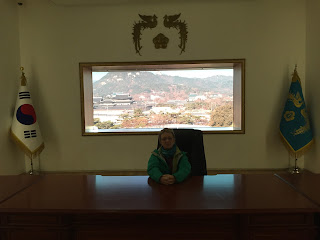The sky and the sea are beautiful shades of blue:
The beaches are isolated and pristine:
The water is a perfect temperature to swim in on a hot, tropical day:
Seventy years ago, this was what this beautiful island of Peleliu looked like:
You have probably heard of the battle of Okinawa, of Iwo Jima and many of the other terrible battles that fought during the Pacific campaign of WWII... but Peleliu? I had never heard of it. It turns out that Peleliu was one of the most vicious battles with the highest percent casualties on both the American and the Japanese sides of any of the island campaigns:
Out of an original Japanese regiment of 15000 soldiers only 19 survived to be captured. On the Allied side there were 2336 men killed and 8450 wounded. (data from here)
This battle doesn't get talked about because in retrospect it seemed to be a "mistake" or perhaps an "unnecessary invasion". Articles today about the battle are called "All for naught"; or "Unnecessary hell"; or "The forgotten battle".
After finding out about this battle it seemed an important piece of understanding for us, living in Japan, me, of American heritage, to visit and attempt to learn from this tragic history.
Our trip was fraught with interesting symbolism; we ended up in a bus with a Japanese tour group, with a tour guide speaking Japanese. On the same bus Shelley, Joel and I were joined by an American pilot for Delta and we had an English speaking Palauan guide. Our guide was passionate about the events on Peleliu having met many veterans who returned to revisit this area with original photos and maps of the battle.
Our first stop was the local museum, a carefully and simply done exhibit in a bombed out munitions depot of both Japanese and American artifacts as well as communications from the generals to their superiors. A very telling telegram was from the Japanese commander who radioed that they had no more planes, supplies and asked permission to withdraw. The answer from HQ was "fight to the death"! There are also personal letters from soldiers to their families and mementos that help personalize the reality of this horrible battle and 1000 paper cranes for peace.
The tour then took us through dense jungle to various bombed out and over-grown sites from the battle including the Japanese HQ buildings:
Scattered throughout the jungle are US and Japanese blown-up hulks of tanks:
And some remains of destroyed Zero fighters:
What was so particularly vicious about this battle like many of the other island battles was that the Japanese army had built countless tunnels throughout the hills of Peleliu from which they could attack and then fade away to attack out of another tunnel. The pounding from the areal bombardments did not affect these tunnels much.
To counter these tunnels the Allied forces would throw in grenades into the tunnels, scorch out the oxygen with a flame thrower then fill in the entrance with a bulldozer.
What remains today are sweeping vistas of oceans and some monuments that the Emperor of Japan has visited.
Plaques to commemorate the war heroes (most died in the battle):

The remains of an American military cemetery. When the US asked permission from the local Palauan community to built a permanent cemetery there, they said no; this had not been their war and they did not want those ghosts on that island.
We finished our tour of the island at the Japanese Shinto shrine, the site of on-going burial ceremonies for newly discovered remains of soldiers. The Japanese government continues to send experts to Palau to open up more sealed caves to find and rebury the remains of soldiers. See attached article. Our guide told of one 93 year old Japanese woman who received a package of letters last year from her husband whose remains had been sealed in a cave since the battle of Peleliu!
Our trip was a sobering reminder of the tragedy of war, of the lasting impact on communities all around the world. We were also stunned to realize that, 5 years after this horrible battle, Japan supported the US in its war in Korea to face together, shoulder to shoulder, the "Communist enemy" of North Korea and China!! See article here.
So...what was the battle of Peleliu for?






























































